What's New
Displaying results 3861 - 3870 of 4052
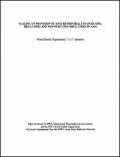
Resource | Publications,
This report was prepared to support WHO efforts to introduce and scale up anti-retroviral therapy (ARV) according to the “WHO 3x5” initiative which is designed to provide three million people with ARV by the year 2005. The International Harm Reduction Association (IHRA) together with regional harm reduction networks was asked to recommend strategies for scaling up ARV to injecting drug users (IDU) and to identify the potential role of the harm reduction networks.
This report gives a regional and country specific overview of the current situation with regards to the provision of services including ARV to IDU/DU in Asia. It provides an analysis of the political environment that impedes or facilitates the provision of ARV to IDU, and offers some recommendations for scaling up ARV and identifies possible models of care.

Resource | Publications,
In recent decades, countries in the Asia-Pacific region have experienced an increase in the mobility - that is, internal and international migration - of men and women in the region. This phenomenon has been accompanied by the relentless spread of the HIV/AIDS epidemic, which affects all countries, including smaller or somewhat isolated countries such as Mongolia and the Democratic People's Republic of Korea.
The UNDP Regional HIV and Development Programme in partnership with Asia Pacific Migration Network (APMRN) commissioned this study in seven countries of the region - Bangladesh, China, Democratic People's Republic of Korea (DPRK), India, Mongolia, Republic of Korea, and Sri Lanka - to undertake a systematic review of the existing knowledge on migration routes and processes, trafficking routes, the conditions under which men and women move, their living and working conditions, and their vulnerabilities to HIV/AIDS. The study also reviewed the legal and policy environments, and identified and analysed the gaps in the existing knowledge and areas for possible action.
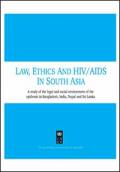
Resource | Publications,
The rights violations against people living with HIV/AIDS (PLWHA) and vulnerable groups are part of a broader environment of social and gender inequality, marginalisation and discrimination in South Asia, which is providing perfect conditions for the epidemic to spread.
This study on which this report is based was commissioned to help enhance our understanding of the deep-rooted relationship between law, rights, the social and ethical environment, and HIV/AIDS vulnerability here in South Asia, as well as to provide actionable recommendations for legislative and policy reform. The findings have revealed a regional situation where significant human rights provisions exist, both in national constitutions and in ratified international conventions, but where there remains a serious disconnect between these provisions and people’s experience at community level.
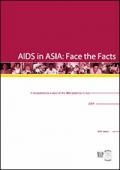
Resource | Publications,
The Asia-Pacific region is home to 60% of the world’s population and to 19% of the men, women and children living with HIV in 2004. This amounts to infection rates that are low compared with some other continents, particularly Africa. But because the populations of many Asian nations are so huge, even low HIV prevalence means large numbers of people are living with HIV—some 5.2 million men, 2 million women and 168,000 children according to new estimates from UNAIDS/WHO. The Asia-Pacific region is vast and diverse, and HIV epidemics in the region share that diversity.
This report focuses largely on prevention of HIV among adults and adolescents. It focuses largely on East, South-East and South Asia, though it also includes information from some Central Asian nations, including Iran, as well as some of the developing countries of the Pacific.
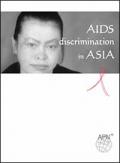
Resource | Publications,
From July 2001 to November 2002, the Asia Pacific Network of People Living with HIV/AIDS (APN+) conducted the first regional documentation of AIDS-related discrimination in Asia. The project is an action-based, peer-led study that aimed to develop an understanding of the nature, pattern and extent of AIDS-related discrimination in several Asian countries. The project was designed and implemented by people living with HIV (positive people) and received ethical approval and funding from UNAIDS.
This study generated quantitative and qualitative data. Trained positive people interviewed 764 of their positive peers in four countries (India 302; Thailand 338; the Philippines 82; Indonesia 42). Findings indicate that AIDS-related discrimination is prevalent in every sector of society.
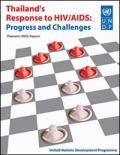
Resource | Publications,
Thailand has shown that a well-funded, politically supported and shrewdly-implemented response can change the course of the HIV/AIDS epidemic. After peaking at 143,000 in 1991, the annual number of new HIV infections has fallen to about 19,000 in 2003 – making Thailand one of a handful of countries to have reversed a serious HIV/AIDS epidemic.
The national adult HIV prevalence continues to edge lower, with the latest estimates pegging it at a little over 1.5 percent at the end of 2003. This astounding achievement translates into millions of lives saved. This report is a powerful account of how Thailand has managed to achieve Millennium Development Goal 6 – to halt and begin to reverse the spread of HIV/AIDS by 2015 – well in advance of schedule, and what now needs to be done to sustain this extraordinary achievement.
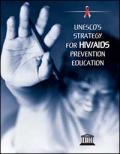
Resource | Publications,
In two decades HIV/AIDS has evolved from a medical curiosity to a worldwide human tragedy and an international emergency. It is a development disaster and a security crisis with social impacts more devastating than any war. It has reduced life expectancy by 15 years in sub-Saharan Africa and created more than 14 million orphans. Its impact is wide-reaching, and even in those parts of the world where the epidemic has been relatively slow to evolve, there are worrying signs of its gathering strength. It has spread nearly everywhere beyond the first so-called high-risk groups, today principally affecting vulnerable populations: the poor, the marginalized, young women and children. It both thrives on and fuels inequalities. Although there are signs of hope — some evidence that political commitment and energetic multisectoral programmes can slow the progression, some encouraging developments in the supply of treatment and care — measures to contain the epidemic or mitigate its effects take time. The effects of HIV/AIDS, even if the situation improves in the near future, will be with us until the end of this century.
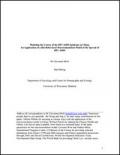
Resource | Guidelines,
The magnitude of the HIV/AIDS epidemic has exceeded all expectations since the virus was first identified 20 years ago. Today, an estimated 42 million people are infected with HIV, and more than 20 million have already died. The epidemic has hit hardest in Sub-Saharan Africa. AIDS deaths in this region account for over three quarters of the global death toll. Because of its large population, Asia is the home to the largest number of people living with HIV/AIDS of any region beside Sub-Saharan Africa. In Thailand, Cambodia and Myanmar adult prevalence rates range from 1.8% to 3%. It is expected that HIV may soon spread in the world's most populous countries, India and China.
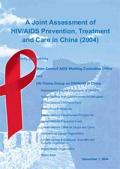
Resource | Publications,
Generally, national HIV prevalence in China remains low, but clusters of high prevalence exist, both geographically and among specific sub-groups. By the end of 2003, the cumulative number of HIV cases was estimated 840,000, corresponding to a total prevalence rate of 0.07%. By the end of September 2004, the cumulative number of reported HIV positive cases was 89,067, with significant increases in reported infections since 2002.
On December 1, 2003, the China Ministry of Health and the UN Theme Group on HIV/AIDS jointly issued an Assessment of HIV/AIDS Prevention, Treatment and Care in China. Given the rapid changes that have occurred since that date, it was decided that an update of the Joint Assessment Report would be prepared by representatives of the State Council AIDS Working Committee Office and the UN system, covering the period to December 1, 2004.
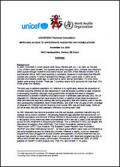
Resource | Publications,
In 2003, more than 5 million people were newly infected with HIV – as many as 700,000 (13%) of them were children. Six hundred and thirty thousand (95%) of these new infections were caused through mother-to-child transmission, and 90% of the infected children live in sub-Saharan Africa. AIDS case reporting is unreliable, however it is estimated that 500,000 children are currently in need of antiretroviral therapy (ARV) world wide. In 2003 some 490,000 child deaths under age 14 were due to AIDS, and an estimated 17% of all AIDS deaths were among children. There are 7 countries where AIDS accounts for more than 10% of the under five mortality.
The best way to address paediatric HIV infection is to significantly reduce the proportion of children acquiring infection as has happened in most developed countries to date.
UNICEF and WHO convened a meeting of technical experts to urgently identify ways and mechanisms to overcome the key obstacles to access of appropriate, acceptable, and affordable ARV formulations for children.





